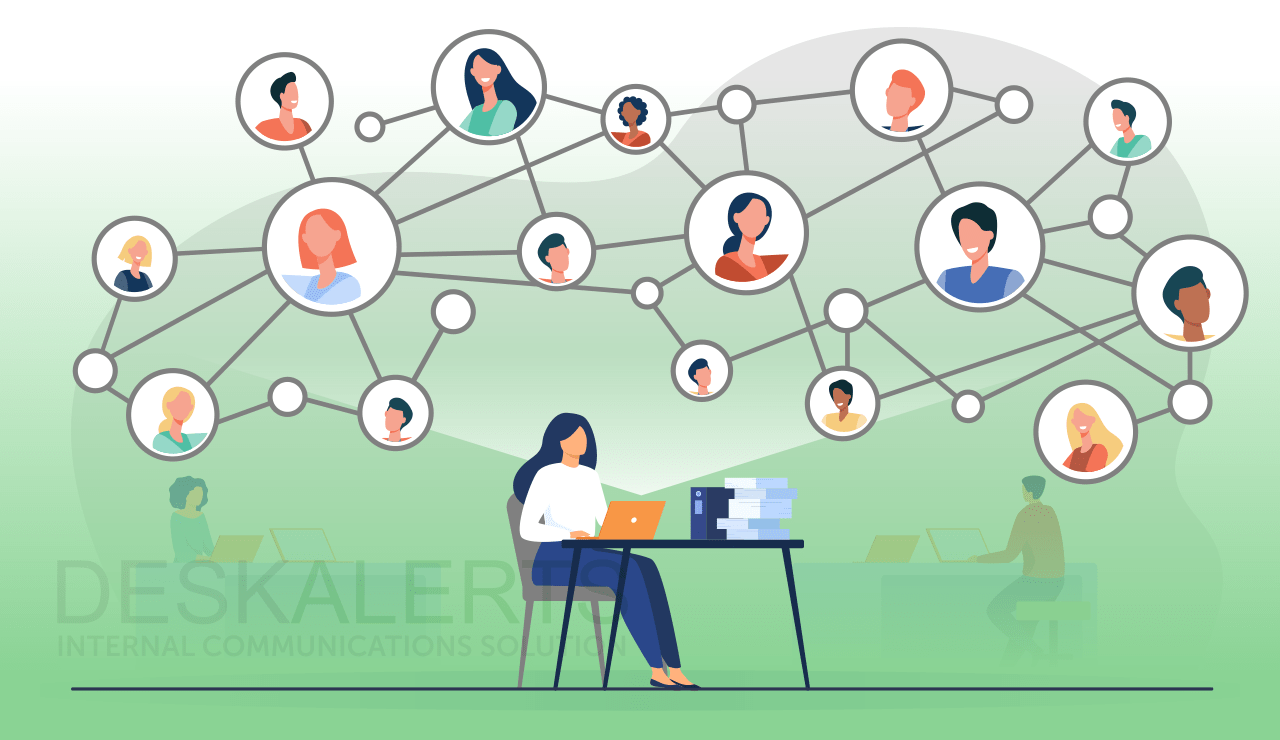
Communications professionals are always looking for new and improved ways to boost and enhance their internal communications efforts to ensure they’re reaching employees in the most effective way possible.
Gone are the days where only typewritten memos, phone calls, posters, and staff meetings were the ways management and employees communicated with one another. Connected, digital workplaces now have a range of different company internal communication tools, thanks to advances in technology, where employees can be engaged on various channels.
In this article, you'll find a list of internal communication tools with their pros and cons. Also, before you dive in, make sure to check how businesses are adapting to new communication trends in 2025.
WHY YOU NEED THE BEST EMPLOYEE AND OFFICE COMMUNICATION TOOLS
Having the best internal communications tools in your toolkit means your workplace will perform better, have fewer mistakes, be unified, and have higher engagement and morale levels. Every step you take towards improving internal communications is a positive one.
What tools do you currently have in your internal communications toolkit? Here are some of the most popular ones other companies will be using in 2025 … are they right for you?
1. Internal newsletters
Internal newsletters continue to be one of the most popular internal communication tools in the workplace. They allow you to aggregate and collate content and deliver less urgent information at set intervals. It’s a fairly low-cost method of communicating – generally, they are sent via email, which is something all employees have access to anyway. A well-designed, well-written, and eye-catching internal newsletter can help you share important information internally and build a positive team culture.
Pros: Cheap and easy to produce and send.
Cons: Email overload may result in reduced open rates and important information being missed.
Examples of internal company communications tools: MailChimp, Campaign Monitor.
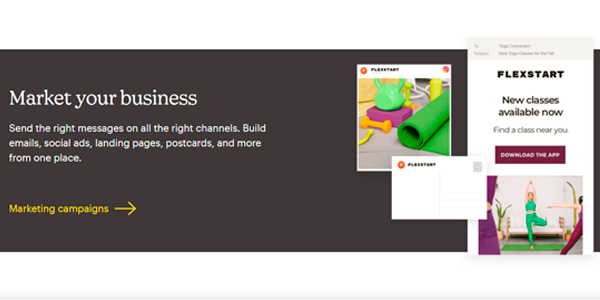
2. Instant messaging
An internal communication app serves as an essential tool for seamless employee connections, allowing instant messaging through text, video, links, and images - whether team members are next to each other or continents apart. Familiar to many from personal use of apps like WhatsApp or Facebook Messenger, internal communication apps offer the quick, informal style many employees prefer. Especially useful for remote teams, these apps ensure swift responses and foster collaboration, proving invaluable for corporate communication needs. Instant messengers have been extremely useful employee communication tools as people have had to work remotely during the COVID-19 pandemic. If you have a quick question you need an answer from a colleague, it’s a good way to communicate quickly.
Pros: Instant, quicker than emailing back and forth. Less disruptive.
Cons: Needs everyone to actively use the tool and participate. Not so good for big group discussions or more formal communication.
Examples of internal communications tools: Skype, Facebook Messenger, Microsoft Teams, Google Chat, Jabber.
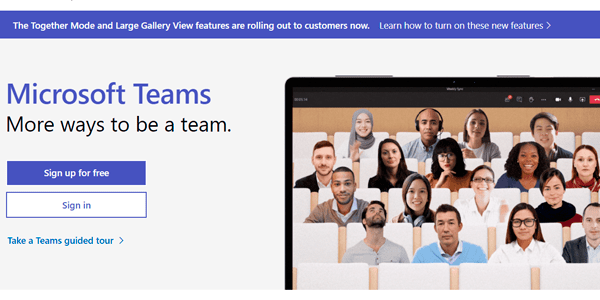
3. Intranet
Intranets are one of the most common internal communication tools in the workplace. They are essentially a centralized repository of knowledge, news, documents, and updates that employees can access a broad range of topics.
Pros: A right way to share knowledge and files with restricted access and ensures you have a corporate knowledge base.
Cons: Can become too expansive. Information can be difficult to find. Employees may not even know when there is an important update.
Examples of internal communications tools: Intranet software platforms such as Blink, Slack, eXo Patform.

4. Team collaboration tools
Collaboration software helps to keep your team’s communications in one place. It’s particularly useful for working on projects as well as breaking down “silos” and sharing knowledge with other areas of the organization. They can also be useful in your internal communications toolkit when you have remote workers or project team members based in different geographic locations.During the pandemic, collaboration software has been used more widely than before, as it has helped teams to remain cohesive while working remotely. This increased uptake is predicted to continue.
Pros: Avoids unnecessary emails. Allows a centralized hub of knowledge. Interactive and encourages a two-way flow of information. Better project management. Increased efficiency and productivity.
Cons: Can be difficult to transition to. Some team members may continue to email and not adopt fully.
Examples of internal communications tools: Microsoft Teams, Slack, Asana, Basecamp, Trello.
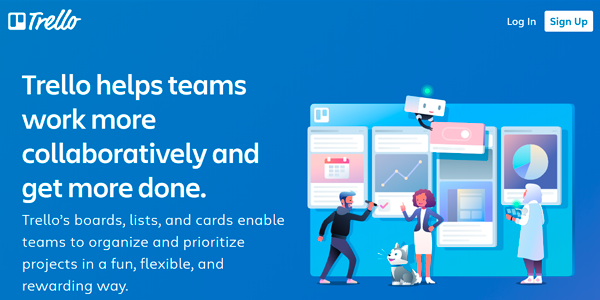
5. Blogs
Internal blogs generally sit on an organization’s intranet site and can become one of the best ways to encourage discussion. There may be a top-down approach to communication in some companies where the blog is written by the CEO and/or senior executives only. In other situations, it might be an opportunity for subject matter experts from across the organization to share information, opinions, and solutions to problems in a conversational way.
Pros: As an internal communication tool, blogs are useful for sharing information, important announcements, reinforcing policies and procedures, and addressing frequently asked questions. Promotes discussions and meaningful conversations.
Cons: Should be regularly updated to be one of the more meaningful communication tools in the workplace. May not be easy to locate on the intranet. May not be read widely.
Examples of internal communications tools: Blogging platforms such as WordPress, Joomla, Drupal.

6. Corporate social media
Employees are used to using social media in their personal lives to share information with friends, and using it for work purposes is a logical step for many. There are some purpose-built employee communication platforms that you can only use within a company (such as Yammer) and other times companies may use established social networks like Facebook. As part of the internal communications toolkit, these are ways to quickly and informally share information and collaborate.
Pros: Information can be shared quickly. Social media integration can be free or cheap.
Cons: Even in this day and age, not everyone has social media. Some employees would be reluctant to link personal social media accounts to their company and wouldn’t view these platforms as internal communication tools and it wouldn’t be their first port of call to find out information. Allowing social media use at work could be misused. You don’t own the platform and terms and conditions can change constantly.
Examples of internal communications platforms: Workplace by Facebook, Yammer.
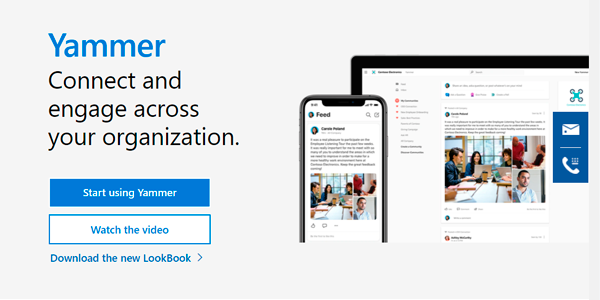
7. Video chat
Video is particularly useful for internal communication tools, or companies spread across different geographic locations. It is one of the best ways that enables co-workers in different offices to talk face-to-face even though they may be many miles apart – or even on the other side of the world from one another. While traditionally they could do this by telephone or traveling to one location for a meeting, video chat software enables everyone to get together without leaving their usual place of work. During the COVID-19 pandemic, video chat software has enabled colleagues to continue to have face-to-face one-on-one conversations while working remotely or meet as a group face-to-face when social distancing and other restrictions make in-person meetings impossible.
Pros: Saves on travel costs. Saves on travel time meaning people can be more productive. Builds a more collaborative team environment. Is more flexible than traditional meetings.
Cons: Technological issues can sometimes make it hard to use, such as slow internet connections or poor facilities and equipment.
Examples of internal communication tools: Skype, Zoom, Microsoft Teams, FaceTime, PowWowNow.
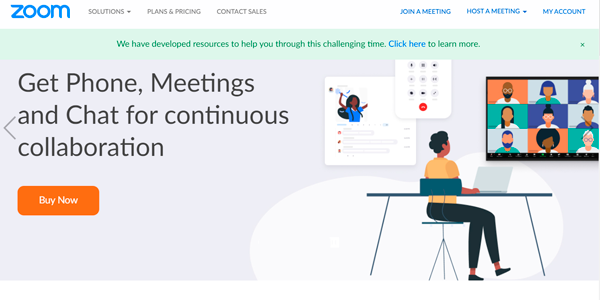
8. Video broadcasts
When you have an important official announcement to make, your CEO or other executives can’t be in every office of a large company at once. Your corporate office may have regular staff meetings that people in regional outposts miss out on and can’t attend. A good way to keep employees in the loop is to broadcast these types of events so that everyone can see and hear, regardless of where they are. Tools such as GoToWebinar can help, and for those who miss out because they were off sick, traveling, on vacation, etc. the recording can still be accessed later.
Pros: These workplace communication tools are relatively cheap and easy to implement provided you have best quality camera and sound equipment. Time zone issues can be overcome by recording broadcasts and making them available later.
Cons: These business communication tools may not solve issues when there are language barriers. Some mobile staff may lack the bandwidth on internet plans to watch lengthy video broadcasts regularly.
Examples of internal communications tools: GoToWebinar, Zoom, Webex

9. Alerting software for important communications
DeskAlerts is an internal communication software system with many features that can instantly deliver critical messages to employees’ computers, smartphones, or tablet devices using various channels, grabbing users’ attention quickly. Pop-up messages on screens and push notifications on mobile devices form the backbone of this product, but other features include scrolling tickers, surveys, polls, quizzes, corporate screensavers, corporate wallpaper, digital signage, and more to give you different options and allow you to run a best practice and comprehensive workplace communication tools.
Pros: One of the most versatile communication tools in the workplace. Very good if you’re on a budget and don’t want to buy multiple software packages! Bypasses email system and cuts through all the other digital noise and clutter in employees’ daily work lives.
Cons: If you have a unique workplace with no computers, phones or tablets you won’t be able to use it.
Example of internal communications tools: DeskAlerts
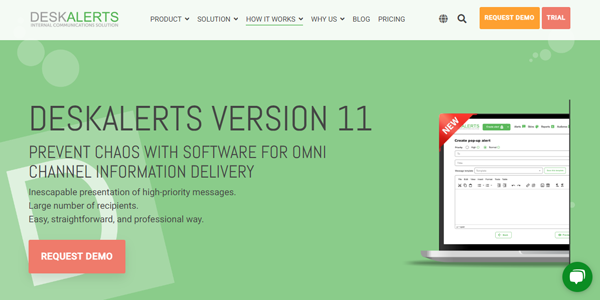
10. Team bonding tools
Tools that help your team get to know one another better can break down silos and foster greater collaboration and knowledge sharing. An example of this internal communication tool is Donut – an integration that people use with Slack – that randomly pairs two people from across an organization and schedules an informal chat so they can get to know one another. Whether it’s bringing together two co-workers who are in the same building, or two who are in different countries, it is a good way for people to get to know what other parts of the company do and understand other perspectives.
Pros: Fosters sharing. Builds a team culture. Creates higher levels of engagement.
Cons: Many introverts will hate it and won’t opt-in unless forced. If your workplace is predominantly introverted, it may not be a good tool.
Examples of internal communications tools: Donut, Slack, Microsoft Teams
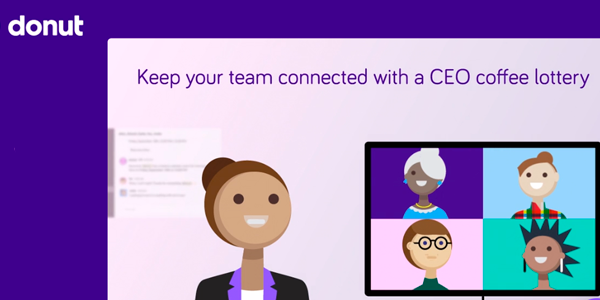
12. Forums
Discussion forums have been part of the internet for a long time. Before the rise of social media, they were one of the most popular ways people would communicate on just about any topic. Discussion “threads” allow multiple people to ask questions, share opinions, get feedback, and solve problems. While many internet forums died off when social media took over, some sites such as Reddit are still very popular, proving that people still like having the ability to share and discuss things this way. The forum software can be added to your company intranet to give employees a place to discuss issues.
Pros: Most intranet software will have a way to integrate this easily. Lets employees be more collaborative and solve problems together without going outside the company for help with internal issues.
Cons: May need to be moderated, meaning it will take more resources.
Examples of internal communications tools: Forum platforms such as vBulletin, Zendesk.

13. Podcasts
Podcasts are enjoying a lot of success right now, with many people tuning in to them for personal enjoyment or professional development. People are used to listening to them while they work, commuting, or even in their downtime while relaxing. Podcasts are better than video because you can listen while driving, for example. This is a good way for internal communicators to tap into preferences and create content on any topic that you want your employees to know about. From corporate announcements to training, the subject matter of the content you create is practically limitless, which makes them one of the most versatile communication tools in the workplace.
Pros: Relatively easy to produce and distribute. Overcomes issues associated with a video.
Cons: Not everyone will want to listen to podcasts. Best used in conjunction with other internal communication methods.
Examples of internal communications tools: Podcast software such as Logic Pro, Audacity, Adobe Audition, Alitu.
14. Screensavers
Many computers these days no longer use screensavers- they were originally invented as a way of preventing older styles of monitors from having a particular image burned into it if it stayed static for too long. Modern monitors are LCD and don’t have this problem, but screensavers are still an option that can be turned on in operating systems if a computer has been idle or unattended for too long. Capitalizing on this feature is a good way to turn your employees’ screens into mini digital billboards. You can communicate just about anything, from new product launch details to reinforcing your corporate values… or just using them as part of your overall branding, displaying the company logo.
Pros: Very easy to implement in major operating systems. A good passive way to reinforce your communication tools in the workplace.
Cons: In most cases, you can’t send custom screens to different users simultaneously and need to attract IT staff every time you need to send something unless you have a tool like DeskAlerts.
Examples of internal communication tools: DeskAlerts screensaver tool, Adobe Spark.

15. Digital signage
When you have other screens throughout your company, such as TV screens in waiting rooms or staff kitchens, these tools to improve communication in the workplace are valuable real estate where you could be communicating company news, remind people about upcoming events, reinforce other messaging such as security and privacy reminders, or showcase your values to a captive audience.
Pros: Easy to use. Capitalizes on screens that may otherwise not be used at all, or only rarely.
Cons: Can be seen by visitors to the company so not useful for secure or sensitive information. Not good for long-form communication on complex subjects.
Example of internal communications tools: DeskAlerts digital signage.

16. Planning tools
Planning tools are a good way to help you get organized and map out your internal communications in advance so you aren’t always rushing around at the last minute looking to fill content holes.
These tools, such as an internal communications editorial calendar, can help you keep track of deadlines, organize and prioritize your workflow, and streamline workflow distribution.
You can even share your planning tools with other parts of the organization so everyone is on the same page - that way they can get information to you and approve content while understanding your needs.
Pros: Increases organization, saves time, helps with teamwork and accountability.
Cons: If other teams in the organization ignore it and don’t stick to deadlines.
Examples of internal communications tools: Excel, Google Drive, Trello.

17. Employee experience tools
Employee experience tools are customized software applications that help to embed aspects of your company culture. They form part of the overall experience that employees have working for your organization.
These corporate communication tools will let your employees easily access the information they need to do their jobs, such as their planners and emails, documents they’ve been working on, and their most used software applications.
They can also be used to help coordinate training, ensure a consistent onboarding experience, and deliver information that employees need, such as payroll information, leave entitlements and balances, managing holidays, and accessing employee benefits.
Pros: Assists organizations maximize productivity in the workplace, reduce wasted time, and improve employees’ working environment.
Cons: May contribute to information overload if not managed appropriately. Older employees may not be comfortable with using them.
Examples of internal communications tools: Officevibe, Qualtrics, Kudos.

18. Virtual events
Virtual events go further than the average webinar or live stream - they’ve evolved during the COVID-19 pandemic and the subsequent new era of remote/hybrid working that has become the “new normal” in the last year.
Virtual events are mass-employee company events that take place online, and in addition to streaming vision and audio, they allow employee engagement and interaction via the ability to ask questions, respond to live polls and even allow the organizers to determine which employees are paying attention and which ones are inattentive. They provide rich analytics instantly.
They’re a great alternative to town-halls and roadshows in large organizations and ensure everyone can find out the same information at the same time as much as is practicable (employees who aren’t on duty may have to watch a recording, but as many town halls aren’t recorded this is still an improvement).
Pros: Less resource-intensive and cheaper to run than taking townhalls on the road in big organizations. Improves information equality and can reduce resentments when regional offices feel they are neglected and forgotten.
Cons: Some employees have poor internet access and the live event experience could be suboptimal. Others may be getting fatigued by too much screen time.
Examples of internal communications tools: GoToWebinar, StreamGo
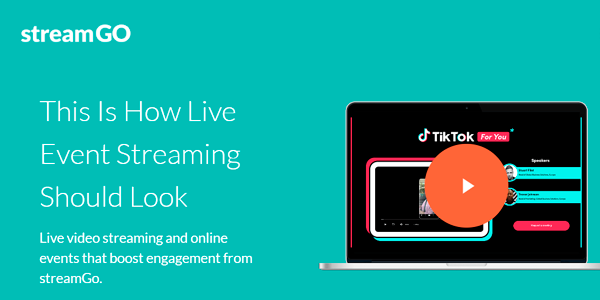
19. Idea management tools
These software applications help make it easier for organizations to gather ideas and feedback from employees to help improve or create new products or systems.
Not only does this help to encourage innovation and drive more successful outcomes in terms of productivity and client relations, but it can help with employee engagement as well. A Salesforce survey found that employees who feel as though their voice has been heard by management are around four to six times more likely to perform at their best.
Pros: Drives innovation and can help to solve just about any problem in the organization, whether its safety, communication issues, making processes more efficient, or responding to common customer issues.
Cons: If your workplace is toxic and you have a leadership team that is known to be punitive you may find employees are reluctant to share ideas.
Examples of internal communications tools: Ideanote, Qmarkets, Brightidea.

20. Employee engagement software
This software can help to round out your employee engagement efforts and gauge the mood of employees. You can use it in conjunction with other employee engagement tools such as surveys and wellbeing programs.
They are especially useful for managers with remote teams so they can determine how engaged their direct reports are.
Pros: Helps to boost productivity and collaboration, improves transparency and accountability, can help you retain top employees.
Cons: The software is only as good as your managers. If they’re not committed to acting on results and generating change and improvements, employees will rightly be cynical.
Examples of internal communications tools: 15Five, Qualtrics, Hive.
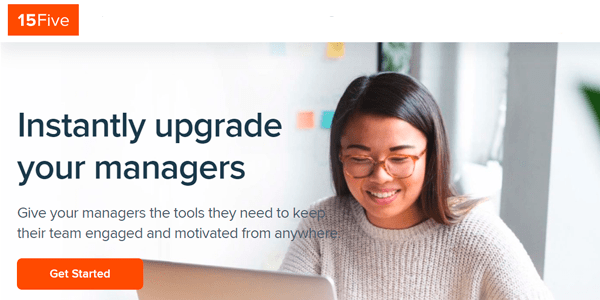
21. Employee apps
This is another tool that has really come into its own during the COVID-19 pandemic. An app is a great way to communicate with a remote workforce or non-office workers. When information changes quickly, such as forced closures, rostering, stock levels, safety advice, etc. you know you can quickly and easily reach employees by sending notifications to their smartphones or tablets.
Pros: Can easily reach all employees at once, or send to custom audiences or even individual staff members. Is highly visible.
Cons: There are actually still some people out there who don’t have mobile phones. Also isn’t reliable if someone has their phone switched off, in airplane mode, or has a poor internet connection.
Example of internal communications tools: DeskAlerts mobile app.
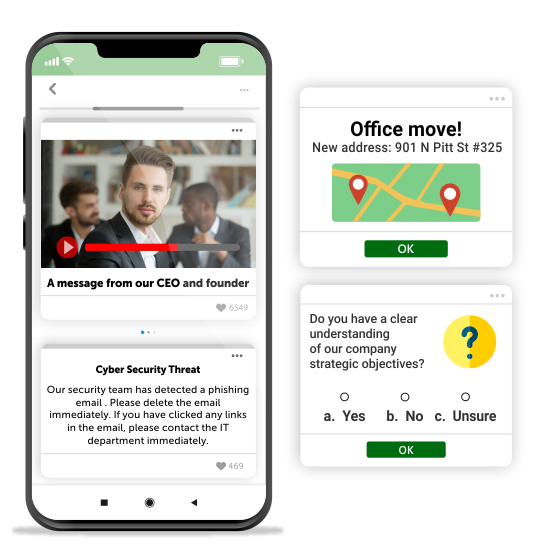
22. Employee recognition apps
These tools are a great addition to your internal communications toolkit. Employee recognition apps let employers recognize and reward their employees for their performance and achievements.
These tools are used to track employee performance as well as provide feedback, identify training needs, encouraging teamwork and collaboration and getting team members to celebrate one another’s’ successes.
Pros: Makes your reward and recognition programs highly visible, easy to access and sharing in a fun way.
Cons: Some age demographics might not like using them.
Example of internal communications tools: Fond, Bonusly, Awardco, Kudos

23. EMPLOYEE SURVEY
Employee survey apps are tools designed to gather feedback and insights from employees in an organization.
Pros: Can improve communication and employee engagement and identify areas for organizational improvement. They offer anonymity and encourage honest responses.
Cons: There can be potential biases, low response rates or misinterpretation of data.
Examples of internal communications tools: Qualtrics, SurveyMonkey, DeskAlerts, TINYpulse.
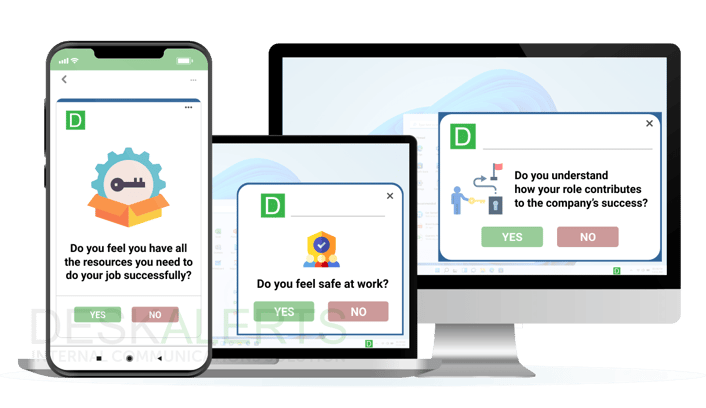
24. MOBILE INTRANET APPS
Mobile intranet apps bring internal communication and collaboration to mobile devices, fostering connectivity among employees. It means that your staff don’t have to be in an office, sitting at a desktop computer to access the company’s intranet content: it gives them the ability to access it at any time or place, so long as they have the app.
Pros: Enhanced accessibility, real-time updates, and improved workflow efficiencies. These apps also facilitate remote work and keep non-desk workers informed.
Cons: If not configured correctly, there can be security concerns.
Examples of internal communications tools: Microsoft SharePoint, Slack, Jostle.
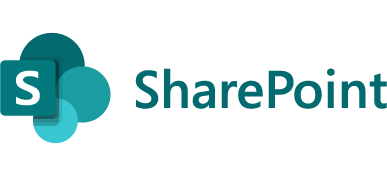
25. SOCIAL EMPLOYEE ADVOCACY TOOLS
Social employee advocacy apps empower employees to be able to share company content on their personal social media, and can amplify the brand’s reach. Effectively they help your employees to become “brand ambassadors” within their own social and other networks.
Pros: Increased brand visibility, authentic storytelling and enhanced employee engagement.
Cons: Potential misuse or inconsistency in brand messaging.
Examples of internal communications tools: HootSuite Amplify, Bambu by Sprout Social, Dynamic Signal.
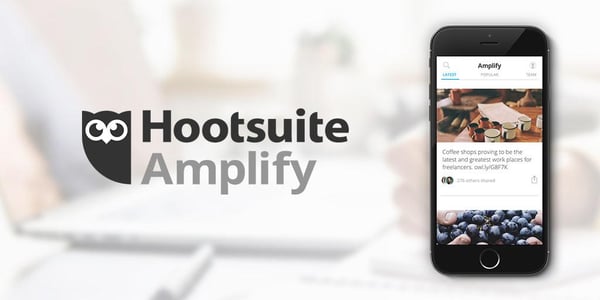
26. COMMUNITY CHANNELS
A community channel is typically a dedicated space within a platform, such as Microsoft Teams, where members of the team can collaborate on specific topics or projects, engage in discussions and share updates. Employees using these channels can post messages, share files and collaborate in more informal and dynamic ways han by using traditional communication tools. This feature is designed to build a sense of community within a team or organization.
Pros: Enhanced teamwork, transparent communication and greater knowledge sharing, while also fostering a sense of community.
Cons: As an internal communication tool, community channels can contribute to information overload and be a potential distraction.
Examples of internal communications tools: Microsoft Teams, Slack, Yammer.
27. LEADERSHIP CENTER OR BLOG
A leadership center or blog is a dedicated space within a company’s communication platform where leadership shares important updates, insights and information with employees of the company. It serves as a centralized hub where the leadership team can communicate key messages, company strategies, corporate priorities and the organization’s vision to the workforce. It can include blog-style posts, articles or multimedia content.
Pros: Helps to increase transparency and creates a sense of connection between the leadership team and the rest of the organization.
Cons: Need to be consistently updated or can look neglected. Important information may not be seen if this is the only delivery channel.
Examples of internal communications tools: Apps like Yammer, Slack or Microsoft Teams with integrated blogging features.
28. JOB BOARD
An employee job board app is a platform within an organization’s internal communication system where job openings and other career opportunities are posted for current employees. It serves as an internal resource where employees can explore new roles, advancement possibilities and lateral moves within the company. It helps to streamline the hiring process and encourage internal talent mobility.
Pros: It helps to promote a culture of employee growth, enhances engagement and streamlines recruitment.
Cons: These HR communication tools can contribute to information overload.
Examples of internal communications tools: Workday, BambooHR, Jira Align.
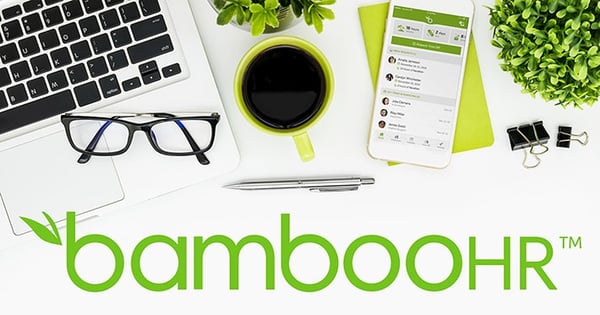
29. ONBOARDING CENTER
An onboarding center is a digital platform or tool designed to streamline and facilitate the onboarding process for new employees within an organization. It generally includes a centralized hub for new hires to access essential resources, training materials, company policies and other relevant information. The aim is to ensure a new employee can quickly integrate into the company culture, have a solid understanding of the organization and be able to access the necessary tools to succeed.
Pros: By streamlining onboarding processes, there is a positive initial experience for employees and consistency in how employees are onboarded across the organization.
Cons: Potential information overload or lack of personalization that can be achieved in some more traditional onboarding processes.
Examples of internal communications tools: BambooHR, WorkBright, Talentsoft.
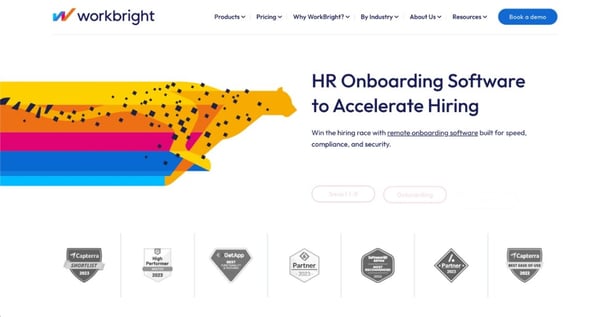
30. MULTILINGUAL TOOL
A multilingual tool in internal communication refers to platforms or software that support communication within an organization across multiple languages. It may offer features such as real-time translation, multilingual content creation or language customization that caters to the linguistic diversity within a global or multicultural workforce.
Pros: Helps overcome language barriers, promotes inclusivity, and ultimately better collaboration and understanding among employees.
Cons: There can be implementation challenges or increased complexity in the workplace.
Examples of internal communications tools: Apps like Slack, Microsoft Teams and Workplace by Facebook often integrate multilingual features.
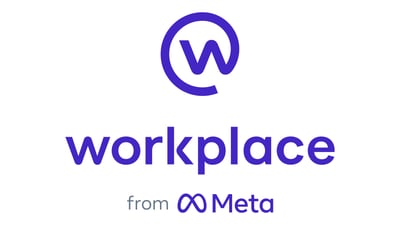
31. BRANDED TOOL
Branded tools are platforms or software that are customized to reflect the specific visual identity, logo and design elements of a company. This includes ensuring the company’s branding such as colors, fonts and other style guidelines are incorporated into the user interface and the communication materials that are created and distributed within the tool.
Pros: Creates a cohesive and recognizable look that aligns with the organization’s brand identity. Enhances the tool’s connection to the company’s culture and reinforces brand consistency.
Cons: May be costly or time consuming to set up effectively.
Examples of internal communications tools: Apps like DeskAlerts, Slack, Microsoft Teams and Workplace by Facebook allow branding customization.
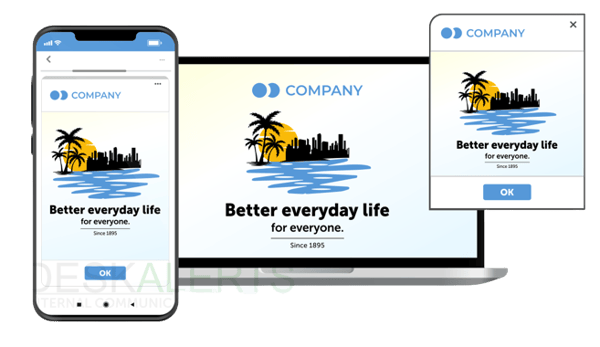
32. CONTENT APPROVAL WORKFLOW TOOL
Content approval workflow tools are designed to facilitate the creation, review and approval processes of content before it is published or distributed within an organization. It typically automates and organizes the steps involved in content development ensuring it meets quality standards, aligns with organizational guidelines and receives necessary approvals. It helps to create a structured workflow involving multiple stakeholders, and helps streamline collaboration while maintaining consistency in the content shared across internal communication channels.
Pros: It is a valuable tool for maintaining content integrity and compliance within an organization. It enhances collaboration and mitigates errors.
Cons: It may create potential delays in sending out time-critical communications, and may add layers of complexity to the content creation process.
Examples of internal communications tools: Apps like DeskAlerts, Wrike, Asana or Monday.com incorporate content approval workflows.
33. ANALYTICS TOOL
Analytics tools are designed to collect, process and analyze data to provide insights, patterns and trends. In internal communication, analytics tools are used to help organizations measure and evaluate the performance of their content and communications strategies. They can track metrics such as engagement, reach and the effectiveness of internal messages.
Pros: Enable data-driven decision making so organizations can refine their communication approaches for better outcomes.
Cons: Potential data privacy concerns, or misinterpretation of analytical data.
Examples of internal communications tools: Google Analytics, Microsoft Power BI, Tableau.
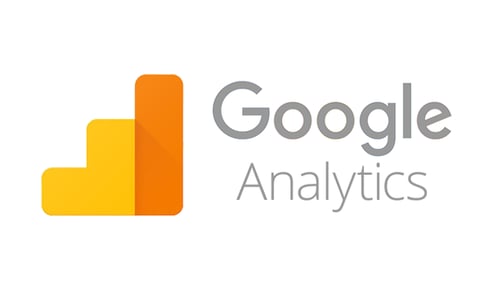
Which tools do you use? Share your experience in the comments.
Frequently Asked Questions
What is the most important tools of employee communication in the workplace?
Every workplace has its own needs. The most important tool for internal communications in any workplace is one that will integrate easily with systems and processes that are in use within that environment, and also be suitable for the type of work that is carried out. At a minimum, email, intranet, employee apps and notifications are important to have.
What are some communication tools
Organizations have many communication tools in place already. This includes:
- Mail
- Email
- Phones
- Text messaging
- Videoconferencing
- Webconferincing
- Intranet
- Instant messengers
- Notifications
- Collaboration platforms
- Corporate social media
Why are communication tools important in the workplace?
Communications tools are important to keep the workplace connected and informed. They ensure that there is better connectivity between management and employees, as well as between colleagues. They also improve collaboration and make it easier for employees to work together, and also improve efficiency and employee engagement levels.
What communication tools do you think is the best?
The best tool for internal communications is one that is easy to use and offers genuine benefits and improvements to the workplace. In today’s workplace this increasingly involves incorporating digital tools to enhance collaboration, share knowledge and boost employee engagement.
WHAT ARE THE FIVE INTERNAL COMMUNICATION TOOLS?
The five main internal company communication tools used in organizations are:
- Email
- Intranet
- Team collaboration apps
- Employee surveys
- Internal social media.
WHAT ARE THE TOOLS OF INTERNAL COMMUNICATION IN BUSINESS COMMUNICATION?
Internal communication tools in business include email, intranet portals, team collaboration apps like Slack or Microsoft Teams, employee surveys and internal social media networks such as Yammer or Workplace by Facebook. These tools enhance information sharing, team collaboration, feedback collection, and overall communication within the organization.
WHAT IS THE MOST USED COMMUNICATION TOOL ON THE JOB?
Email is one of the most widely used communication tools on the job. It allows for formal documentation, file sharing, and correspondence with colleagues, clients, and superiors. However, the choice of the most-used tool can vary depending on the industry as well as any specific workplace preferences.
WHAT IS THE STRONGEST COMMUNICATION TOOL?
The strength of a communication tool depends on the context and purpose of its use - there really is no one-size-fits-all answer. Strong workplace communication tools can include email, messaging apps like Slack for real-time team collaboration, video conferencing for face-to-face interactions and intranet portals for information sharing. The effectiveness of a tool depends on how well it aligns with the organization's goals and the specific communication needs at hand.
WHAT ARE COMMUNICATION TOOL EXAMPLES?
Communication tool examples include:
- Email - widely used for written correspondence and document sharing.
- Messaging apps - office communication tools like Slack, Microsoft Teams, and WhatsApp for real-time team communication.
- Video conferencing - platforms like Zoom, Microsoft Teams and Skype for face-to-face virtual meetings.
- Intranet portals - internal websites for information sharing and collaboration.
- Social media - platforms like Yammer or Workplace by Facebook for informal communication.
- Phone calls - traditional voice communication for one-on-one or group conversations.
- Employee surveys - tools like SurveyMonkey for feedback collection and engagement measurement
What are the 4 tools of communication?
Four communication tools include:
- Slack for real-time messaging
- Microsoft Teams for collaboration
- Zoom for video conferencing
- Email for synchronized communication.
Each tool for internal communications serves needs and offers features for effective and diverse ways of interacting within an organization.
What are some common internal communication devices?
Common internal communication devices include computers, smartphones, tablets and desk phones. They enable employees to access communication platforms, collaborate on projects and stay connected within the company’s internal network.
What is an example of internal communication?
An example of internal communication is a company-wide email announcing a policy change so that employees are aware of it and can take the appropriate actions that ensure they comply with it.
What are internal and external business communication tools?
Internal workplace communication tools include platforms like Slack, Microsoft Teams and email for team collaboration. External tools such as customer relationship management (CRM) software, social media platforms and video conferencing apps facilitate communication with clients, partners and the public.
Which communication technology often takes the place of printed interoffice communication?
Email often takes the place of printed inter-office communication, offering a digital alternative for sending messages, memos and updates within an organization.
 Caroline Duncan
Caroline Duncan



































